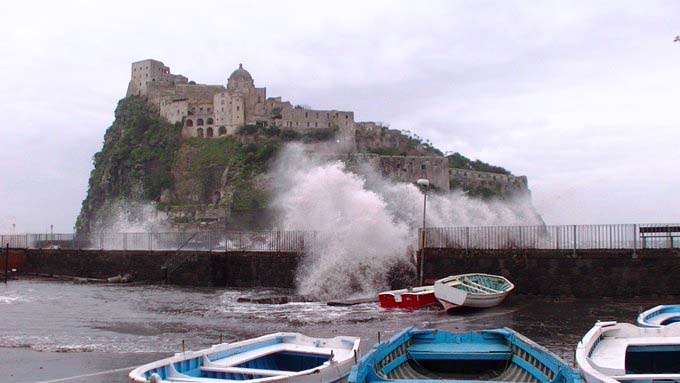Floods in Venice have dominated the international headlines, but that was not the only weather emergency to hit Italy last week. From the north of the country to the south, extreme weather struck region after region, closing roads, schools and businesses, while police and firefighters worked frantically around the clock, strained to the point of exhaustion.
As the waters in Venice began to recede, elsewhere in Italy, chaos ensued as the Arno River surged to alarming levels in Florence and heavy snow left thousands without power in South Tyrol. Several years ago, many countries in Europe adopted a color scheme for weather related issues. A yellow alert means be aware – severely bad weather is possible over the upcoming days and people should plan ahead for possible travel delays and a disruption of day-to-day activities. An orange alert means be prepared – there is an increased likelihood of severe weather affecting the area, so people should be prepared to change plans and protect themselves. The highest level of warning is red – means take action; extremely bad weather is expected and people need to take action to keep themselves safe.
Three Italian regions issued red alerts for storms, floods and landslides: Tuscany, Emilia-Romagna and Friuli Venezia-Giulia. Parts of Veneto were on an orange alert, as was the province of Bolzano in Alto Adige (South Tyrol). Another eight regions from north to south, most of the country in fact, were on yellow alert.
Authorities in Tuscany were monitoring the Arno River as heavy rain caused the river to rise dangerously near the top of its banks. In Pisa, the army was called in to reinforce flood barriers. Bridges in the city center were shut down as a result. The city council ordered schools, universities and businesses to stay closed as the river rose dramatically above its usual level.
In Florence, residents were warned to stay away from the banks of the Arno. Over two and one half inches of rain fell in 24 hours causing the normally placid river to rise and surge through the city with a force of over 500,000 gallons per second. Firefighters carried out nearly 400 rescues in Tuscany alone, including searching for a person swept away by the current in the province of Grosseto. He was later found clinging on to a tree.
Meanwhile, the fire service said it had carried out 450 rescues in Emilia-Romagna, where the River Idice burst its banks. Regional President Stefano Bonaccini called it a “historic flood” and declared a state of emergency, as hundreds of residents needed to be evacuated.
Further north, the province of Bolzano in South Tyrol, received almost 60 inches of snow, closing roads and leaving most towns cut off. One avalanche was reported, but the risk of more incidents reached high warning levels. A landslide caused a train to derail near Rio di Pusteria, in the region of Trentino-Alto Adige. Thankfully, no one was injured.
In Rome, more than a week of daily thunderstorms saw trees felled and roads under water. Authorities closed parts of the banks of the Tiber as a precaution, as they monitored the river for flood risks. Strong winds and rough seas were reported all along the coast of the Lazio region, with entire beaches nearly washed away.
In the region of Campania, Caserta and several neighboring towns ordered schools closed after heavy rainfall flooded streets, leaving scattered debris in its wake. Outside the city, the Volturno River burst its banks, causing floods in the surrounding area. Flooding was also reported in Naples, especially in the Rione Sanità neighborhood, where streets and houses were submerged by rainwater for several days.
The island of Ischia in the Gulf of Naples suffered severe damage from stormy seas, which smashed into anything that was close to the shore. The walkway leading to the Aragonese Castle, one of Ischia’s most-visited sights, was also hit, causing part of it to collapse.
In total, Italy’s firefighters say they have carried out 8,000 rescues the length and breadth of the country in the past week.
The week also saw the southern regions of Sicily, Calabria, Basilicata and Puglia hit with thunderstorms, hail and tornadoes. There were great concerns for Matera in Basilicata, which suffered unprecedented floods. The storms wreaked havoc on Italy’s agriculture and fishing industries, as rain and wind swept away crops and rough seas forced boats to stay in port. All in all, it was a fierce week as Mother Nature’s fury was directed up and down the peninsula and into the mountains of the north.




